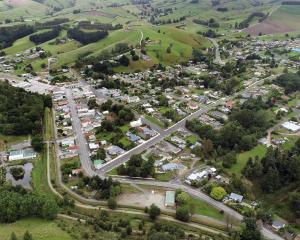The long-running saga on the merits or otherwise of wilding pines has generated a lot of response through this paper from readers, academics, through the opinion page and the paper's own peer contributors. If nothing else, the ongoing discussion has raised public awareness of the issue.
The majority of correspondents supported removal of wilding trees by felling the larger specimens and hand-pulling the seedlings. The efforts of concerned volunteers toward the removal of 60,000 such trees in the Queenstown-Lakes district will be applauded by some, or many, depending upon which direction their sympathies lie.
However, will all that dedicated effort offer a permanent solution or is it just a well-intended though perhaps naive belief?
Mother Nature can be a rather intractable old matriarch, and no matter how strenuously Man tries to thwart her advances, she will invariably be the clear winner in a marathon. After all, she has been around far longer than mankind and has not survived millions of years by simply taking a back seat when threatened. She is a formidable contestant, smart, very smart in fact, versatile, highly adaptable, and loves a challenge. When the chips are down, she will always be one jump ahead, ever ready to override our mistaken endeavours by taking control of regeneration her way.
She abhors nudity and will make sure that all of her domain remains well covered. There will be no bare spots for her, no sir. Pull out a weed and see what she does, she will plant another one straight back and will continue to do so as long as we constantly annoy her by perpetuating our misguided attempts at laying the ground bare. We need to think smarter and meet her on her own terms.
Following the felling of our native bush cover by the early settlers and conversion of the land to grasslands for sheep and cattle, regrowth scrub was a never-ending battle for farmers through much of the central North Island, especially on the harder hill country. Pastures comprised predominantly low-producing danthonia-browntop swards possessing only a short growing season before running to seed and becoming unpalatable to stock.
The low fertility, low herbage production and low grazing capacity made conditions ideal for rapid reversion to woody plants such as manuka and kanuka. So, for several generations, farmers would laboriously cut down the scrub by hand slasher, only to watch it quickly grow back to a canopy cover within the space of 10 to 15 years. They would then have to repeat the whole process all over again. As history would show, they were never going to control the constant regrowth using sweat and tears as a tool.
It was not until the introduction of aerial topdressing and oversowing during the 1950s that the recurring weed infestation was overcome, through the lifting of soil fertility and establishment of improved higher producing swards encouraging increased grazing densities. Scrub could not compete under the altered environmental conditions and virtually ceased to be a problem of any significance thereafter, except on the poorest hill country (that was never going to be made into anything other than what it ever was, so over time it will gradually return to mixed podocarp forest).
The point is that all plants flourish best within a range of fairly specific parameters particularly suited to each species, embodying soil type, fertility, aspect, elevation, wind strength and rainfall. Which is the reason, of course, we don't normally find bananas in Bannockburn, or tussock in Takapuna.
Central Otago has not always been tussock country. Indeed, much of it was clothed in native bush and scrubland before fires set initially by natural causes, then later reputedly by moa hunters. After the devastation, perhaps it was the old matriarch herself that gave us tussock as a precursor to subsequent regeneration and colonisation by higher woody plants and ultimately the emergence of a forested landscape.
The Queenstown-Lakes area is an interesting conundrum.
The plantation of Douglas fir along Malaghan Rd is a managed commercial forest. It is not an unattractive backdrop viewed from the valley floor, and one could well imagine public opinion reflecting considerable displeasure should the forest be felled and the land cleared. The old girl would relish the opportunity to have an input, though - she would soon rustle up something, anything, to hide the eyesore.
And it may even be something much less attractive than fir trees.
The article contributed by Mick Strack of the University of Otago School of Surveying (16.1.12) introduced some welcome lateral thinking on the subject. The article discussed the differing outcomes between the two main diametrically opposed land management regimes, viz on the one hand farming and its associated grazing and burning practices, while on the other, retirement of the tussock lands into the Crown conservation estate.
Dr Strack wrote "as with all land-use decisions, we must work with nature, not against it".
We live in a mere moment of time in the history of the planet.
It has constantly evolved throughout the ages, and will continue to do so long after we have gone. We are able to exist on earth only because nature provides us with all our needs for survival. Yet in this modern world of rapidly diminishing forest cover, some are still prepared to promote the age-old slash and burn mentality - in this case, "for the good of the view, rather than for the good of the planet".
Maybe it is time we reconfigured our response strategies and embraced greater biodiversity, which is, after all, the key to a balanced and healthy ecosystem.










